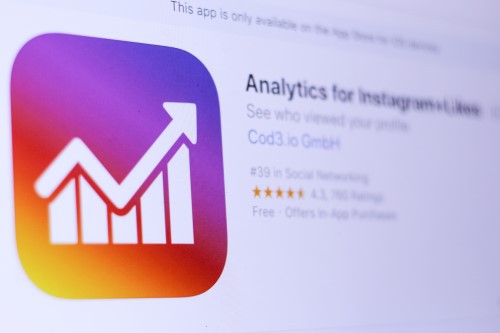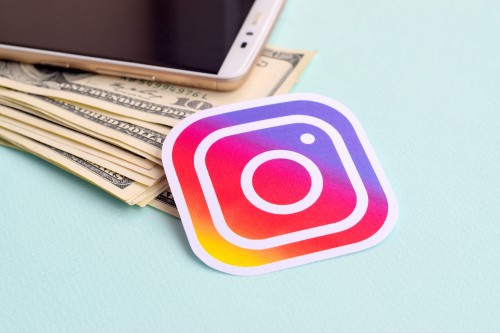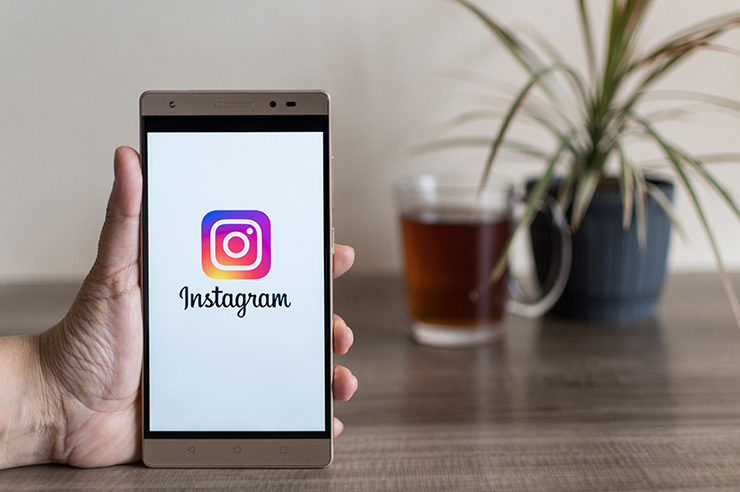Instagram is one of the most popular social networks in the world, but if you’re using it for your business, you need to take a strategic approach — especially if you’re paying for ads.
With more than 500 million daily users and hundreds of millions of new posts, stories, and reels posted daily, it’s important to use every tool available to make your business stand out.
The Instagram app has a built-in analytics tool called “Insights” that provides data about your page, your followers, and each individual post. You can view this data by clicking the “Insights” button at the top of your profile page.
Instagram also offers useful analytics for advertisers and marketers. In this article, you’ll learn how to measure the success of your Instagram ads using Instagram analytics. We’ll teach you how to use Instagram Insights, so you can leverage data to improve your ad campaigns and reach more of your target audience.
What Are Instagram Analytics and Insights?
 Instagram analytics and insights are data, information, and metrics that help you measure your performance on Instagram. Analytics track the number of likes, comments, and followers on your posts and account, and insights are behind-the-scenes data about your audience.
Instagram analytics and insights are data, information, and metrics that help you measure your performance on Instagram. Analytics track the number of likes, comments, and followers on your posts and account, and insights are behind-the-scenes data about your audience.
With Instagram’s analytics, you can get insight into every post and story you share — including ads. You can also see how well your profile as a whole is performing.
Instagram analytics gives you everything you need to track who your audience is and see how they engage with your business on Instagram. You can use Instagram analytics to inform your decisions about what content to publish, when to publish it, and how to promote it.
There are two main sources of Instagram analytics and insights: native Instagram Insights (for business accounts) and third-party tools. Both types of tools can provide different types of useful data that help you optimize your Instagram marketing strategy.
Types of Instagram Insights
Instagram business analytics help you track the performance of your ads and posts, including how many impressions they get, how many people engage with them, and when they peak in terms of engagement.
 The information provided here is important because it enables you to measure the success of your Instagram ads. If a post receives high engagement, you can also use insights to further analyze audience demographics like age, gender, and location.
The information provided here is important because it enables you to measure the success of your Instagram ads. If a post receives high engagement, you can also use insights to further analyze audience demographics like age, gender, and location.
There are three main metrics to consider when measuring the success of an Instagram ad:
- Impressions
- Engagements
- Clicks
Impressions refer to the total number of times your ad was seen. It’s important to understand that an impression is different from reach, which is the number of people who actually saw your ad.
Engagement is the number of times people interact with your post or ad, such as by commenting on it, sharing it, or clicking on a link you’ve included in it.
A click refers to any time someone clicks on a link in your ad. This link may be a link to your website or landing page, or it could be a link to where people can buy your product from a third-party site like Amazon.
How to See Instagram Business Analytics
If you’re asking yourself “how to get your Instagram business analytics,” you aren’t alone. The platform limits its Insights tab to Instagram business accounts, so these features are not available to most users by default.
Make sure you’re using an Instagram business account to see Instagram business analytics. They’re free, and they give you access to lots of great insights into your posts and follower activity. Instagram business analytics can help you understand who your followers are and when they’re online, so you can post at the right times.
How to Create a Business Account
- Go to your profile and tap the three bars to open up the menu
- Tap “Settings”
- Tap “Switch to Business Profile”
- Follow the on-screen instructions to connect a Facebook Page associated with your personal account (or create a new one)
Select the “Instagram Insights” button on your Instagram business profile to access your Instagram business analytics.
How Instagram Analytics Can Benefit Your Business
 Instagram is one of the most popular social media platforms today. With its highly engaged audience, you can use it to increase brand awareness, improve engagement with customers and drive traffic to your website.
Instagram is one of the most popular social media platforms today. With its highly engaged audience, you can use it to increase brand awareness, improve engagement with customers and drive traffic to your website.
Analytics and insights can be incredibly valuable for businesses on social media. These metrics give you a better understanding of how well your content is performing on Instagram, so you can make adjustments to improve it.
Instagram metrics can also help you monitor the performance of your posts and assess the overall success of your account. They will assist you in improving your performance and measuring your ROI on Instagram.
Instagram business analytics aren’t just for big businesses either. Small businesses can benefit from Instagram analytics just as much as large companies, if not more so. Most small businesses need to understand their audience more than anyone so they can learn who to reach out to and what kind of ads will appeal best to them.
How to Utilize Instagram Analytics to Measure Ad Success
Instagram can be a valuable visual marketing channel for your brand, with opportunities to use targeted advertising to attract a large audience.
Using Instagram analytics is essential for any business that wants to make the most of the platform. To track the performance of your Instagram ads, for example, you need a way to measure and analyze key data points.
You can use Instagram business analytics to:
- Understand your followers
- Define your audience
- Streamline your ads
- Determine the best time to run ad campaigns
- Find your conversion rate
- Make improvements based on your data
- Track changes in clicks and impressions as you implement changes to your ad campaign
Like any form of marketing analytics, Instagram business analytics is designed to help you understand how to improve the performance of your posts.
At a basic level, analytics shows you how each Instagram post performs. But there is a deeper level of information that these tools provide. You can use this data to learn about your audience, which types of posts resonate with them, and when they’re most active on Instagram.



